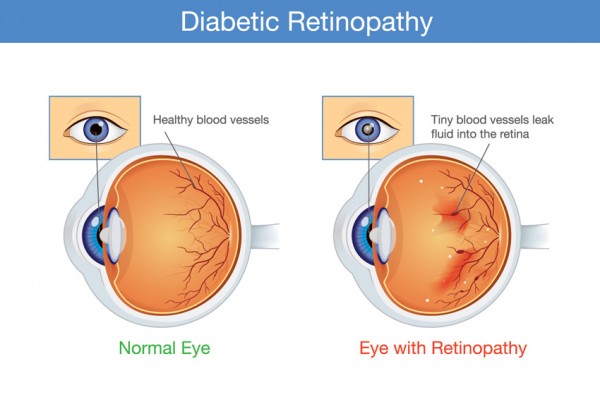-
A - Z of Services
- Anaesthesia
- Audiology
- Te Tai Tokerau Bariatric Surgery Programme
- B4 School Check
- Bowel Screening Programme
- Breastfeeding
- Breast Clinic
- Cancer (Oncology) Services
- Cervical Screening
- Chaplaincy Care
- Cardiology
- Childbirth Education Classes
- Child Health
- Child Health Connection Service
- Child Protection & Family Violence Service
- Clinical Coding
- Clinical Records Service
- Colposcopy Service
- Communicable Disease
- Community Physiotherapy Service
- Community Rehabilitation & Allied Health Services
- Dental Services
- Diabetes
- District Nursing Service Whangarei
- Ear, Nose & Throat (ENT)
- Endocrinology
- Endoscopy
- Foundations, Charities and Volunteers
- General Medicine
- General Surgery
- Gynaecology
- Health of Older People (HOP)
- Healthy Lifestyles Programme
- Health Promoting Schools / Fruit in Schools
- Health Protection Officers
- Hearing Screening Testing
- He Tupua Waiora - Pregnancy and Parental Service
- He Waka Kakarauri
- Immunisation Coordinator - Well Child Youth & Clinical Service
- Incontinence Service
- Laboratory
- Liver Service
- Māori Health Directorate - Te Poutokomanawa
- Maternity Services
-
Mental Health
- Adult Community Service
- Adult Kaupapa Maori (Te Roopu Whitiora)
- Child & Adolescent Service (Te Roopu Kimiora)
- Crisis Assessment Team (CATT)
- Early Psychosis Intervention Service
- Employment Works
- Inpatient Services
- Intensive Community Team (ICT)
- Psychiatry for Older People Service (POPS)
- Triage Service
- Te Tumu Waiora (Head Towards Wellness)
- Te Roopu Kimiora - Child and Adolescent Mental Health & Addictions Services
- Mobile Ear Clinic
- Neurology
- New Born Hearing Screening (UNHSEIP)
-
Ngā Tātai Ihorangi [Pre Conception and pregnancy through to the First 2000 Days]
- Background
- Ngā Wānanga o Hine Kōpū [Māori labour, birth and parenting programme]
- Values of Ngā Wānanga o Hine kōpū
- Health Services for our Tamariki
- Ngā Tātai Ihorangi - Name Creation
- Ngā Tātai Ihorangi Logo
- Hari has a Wahakura - Download or Order Booklets
- Video Resources
- Hapū Wānanga - Registration
- Whaia Te Ora Wānanga - Registration
- Northland Primary Options
- Ophthalmology
- Oral Health Service
- Oral & Maxillofacial Service
- Orthopaedic Services
- Orthotic Department
- Pain Management Service
- Palliative Care Service
- Patient Safety & Quality Improvement Directorate
- People's Bus - Te Pahi o Ngā Iwi
- Primary Health
- Public Health
- Radiology
- Release of Patient Information
- Renal (Nephrology) Service
- Research
- Respiratory
- Rheumatology Service
- Sexual Health
- Sexual Health Service
- Speech Language Therapy (Adults)
- Stroke/TIA Service
- Urology
- Vascular Service
- Vision Screening Testing
- Youth Health Services
-
Our Hospitals
- Bay of Islands Hospital Services
-
Dargaville Hospital
- Administration
- Adult Community Mental Health and Addictions Service
- Child Health Service
- Diabetes Clinical Nurse Specialist
- District Nursing Service
- Facilities
- General Ward
- Laboratory
- Māori Health Takawaenga Service
- Maternity Service
- Occupational Therapy
- Outpatients
- Physiotherapy
- Public Health Nursing
- Radiology
- Social Work
- Timatanga Hou / Detoxification Service
- Kaitaia Hospital Services
-
Whangārei Hospital Services
- Assessment Unit
- Carparking
- Coronary Care Unit - Whangārei Hospital
- Children's Ward
- Emergency Department
- Intensive Care Unit
- Maternity Service
- Medical Wards - 12, 14, 16
- Operating Theatres
- Orthopaedic Ward
- Orthotic Service
- Outpatients - what we do and how to find us
- Physiotherapy
- Special Care Baby Unit (SCBU)
- Surgical Ward 3
- Surgical Ward 4
- Te Wāhi Tirohia Oranga Whēkau – The Endoscopy Suite
- Ward 15 - Acute Stroke Unit / Assessment & Rehabilitation
- Kaitiaki Partners in Care
- Shuttle Services
- Patient and Visitor Information
- Eligibility and fees
Diabetes Eye Screening
 |
||||
|
|
||||
On this page |
||||
|
> Me pēhea mātou e āwhina ia koe | How we can help > Me pehea taku whakaritenga hui? | How do I make an appointment? > Ka ahatia i te wa whakaritenga? | What happens at the appointment? |
|
|||
Whakaupoko
Introduction
Diabetic retinopathy | Kinonga karu nā te matehuka
People with diabetes are at risk of developing retinopathy (also called diabetic eye disease) which occurs in the retinas at the back of the eyes.
Your diabetes can affect the blood vessels in your retinas in several ways. The vessels can weaken and leak, otherwise become blocked and cause swelling. Sometimes, abnormal new vessels grow on the retina. All these changes can lead to vision loss if not addressed.
You can have retinopathy and not know it. This is because often there are no symptoms in its early stages.
Diabetic eye screening is an effective way to detect retinopathy early and allow you to adjust your diet and exercise, and talk with your GP about your medication, all to help regulate your blood glucose/sugar, blood pressure and cholesterol levels.
This can reduce or prevent further damage to your retinas, well-before you notice any changes to your vision. The presence of retinopathy can indicate that similar damage is occurring throughout your body also.
Eye screening is an important part of your diabetes care; just like visiting your GP, diabetes nurse and podiatrist.

Me pēhea mātou e āwhina ia koe
How we can help you
Diabetes eye screening is available free-of-charge for Taitokerau Northland residents with diabetes.
Screening is usually done every two years, however if we notice any retinopathy, we will arrange to see you in a year’s time or sooner.
Me pehea taku whakaritenga hui?
How to make an appointment
Ask your GP to refer you for enrolment with the Diabetes Eye Screening Clinic. Once enrolled, one of our team will contact you to arrange an appointment.
Clinics are held in Whangārei on two days each week. Clinics at communities throughout the region are held on scheduled dates.
Ka ahatia i te wa whakaritenga?
What happens at the appointment?
We use a modern confocal scanner to photograph the retinas of your eyes. The process is non-invasive, painless and quick, with most appointments completed within 30 minutes.
Some people may require eye drops to dilate their pupils, making them slightly larger temporarily to help achieve the best-possible images. If you do need drops and do not have someone available to drive you home, we will arrange another appointment at a later date.
Before the end of the appointment we will review the images with you and offer feedback. A written report will then be sent to you and your GP. We encourage you to discuss the results when you next meet with your GP.
Mo ētahi atu korero
For more information
For more about diabetic retinopathy, visit Diabetes NZ - Eyes Complications or Health Navigator NZ.
For more about diabetes, visit the Diabetes NZ, Ministry of Health, or the Kids Health NZ websites.
Last modified:
-
A - Z of Services
- Anaesthesia
- Audiology
- Te Tai Tokerau Bariatric Surgery Programme
- B4 School Check
- Bowel Screening Programme
- Breastfeeding
- Breast Clinic
- Cancer (Oncology) Services
- Cervical Screening
- Chaplaincy Care
- Cardiology
- Childbirth Education Classes
- Child Health
- Child Health Connection Service
- Child Protection & Family Violence Service
- Clinical Coding
- Clinical Records Service
- Colposcopy Service
- Communicable Disease
- Community Physiotherapy Service
- Community Rehabilitation & Allied Health Services
- Dental Services
- Diabetes
- District Nursing Service Whangarei
- Ear, Nose & Throat (ENT)
- Endocrinology
- Endoscopy
- Foundations, Charities and Volunteers
- General Medicine
- General Surgery
- Gynaecology
- Health of Older People (HOP)
- Healthy Lifestyles Programme
- Health Promoting Schools / Fruit in Schools
- Health Protection Officers
- Hearing Screening Testing
- He Tupua Waiora - Pregnancy and Parental Service
- He Waka Kakarauri
- Immunisation Coordinator - Well Child Youth & Clinical Service
- Incontinence Service
- Laboratory
- Liver Service
- Māori Health Directorate - Te Poutokomanawa
- Maternity Services
-
Mental Health
- Adult Community Service
- Adult Kaupapa Maori (Te Roopu Whitiora)
- Child & Adolescent Service (Te Roopu Kimiora)
- Crisis Assessment Team (CATT)
- Early Psychosis Intervention Service
- Employment Works
- Inpatient Services
- Intensive Community Team (ICT)
- Psychiatry for Older People Service (POPS)
- Triage Service
- Te Tumu Waiora (Head Towards Wellness)
- Te Roopu Kimiora - Child and Adolescent Mental Health & Addictions Services
- Mobile Ear Clinic
- Neurology
- New Born Hearing Screening (UNHSEIP)
-
Ngā Tātai Ihorangi [Pre Conception and pregnancy through to the First 2000 Days]
- Background
- Ngā Wānanga o Hine Kōpū [Māori labour, birth and parenting programme]
- Values of Ngā Wānanga o Hine kōpū
- Health Services for our Tamariki
- Ngā Tātai Ihorangi - Name Creation
- Ngā Tātai Ihorangi Logo
- Hari has a Wahakura - Download or Order Booklets
- Video Resources
- Hapū Wānanga - Registration
- Whaia Te Ora Wānanga - Registration
- Northland Primary Options
- Ophthalmology
- Oral Health Service
- Oral & Maxillofacial Service
- Orthopaedic Services
- Orthotic Department
- Pain Management Service
- Palliative Care Service
- Patient Safety & Quality Improvement Directorate
- People's Bus - Te Pahi o Ngā Iwi
- Primary Health
- Public Health
- Radiology
- Release of Patient Information
- Renal (Nephrology) Service
- Research
- Respiratory
- Rheumatology Service
- Sexual Health
- Sexual Health Service
- Speech Language Therapy (Adults)
- Stroke/TIA Service
- Urology
- Vascular Service
- Vision Screening Testing
- Youth Health Services
-
Our Hospitals
- Bay of Islands Hospital Services
-
Dargaville Hospital
- Administration
- Adult Community Mental Health and Addictions Service
- Child Health Service
- Diabetes Clinical Nurse Specialist
- District Nursing Service
- Facilities
- General Ward
- Laboratory
- Māori Health Takawaenga Service
- Maternity Service
- Occupational Therapy
- Outpatients
- Physiotherapy
- Public Health Nursing
- Radiology
- Social Work
- Timatanga Hou / Detoxification Service
- Kaitaia Hospital Services
-
Whangārei Hospital Services
- Assessment Unit
- Carparking
- Coronary Care Unit - Whangārei Hospital
- Children's Ward
- Emergency Department
- Intensive Care Unit
- Maternity Service
- Medical Wards - 12, 14, 16
- Operating Theatres
- Orthopaedic Ward
- Orthotic Service
- Outpatients - what we do and how to find us
- Physiotherapy
- Special Care Baby Unit (SCBU)
- Surgical Ward 3
- Surgical Ward 4
- Te Wāhi Tirohia Oranga Whēkau – The Endoscopy Suite
- Ward 15 - Acute Stroke Unit / Assessment & Rehabilitation
- Kaitiaki Partners in Care
- Shuttle Services
- Patient and Visitor Information
- Eligibility and fees
